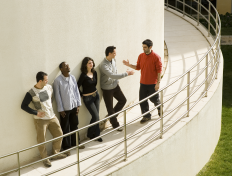Titulo Estágio
Learning to Interact
Local do Estágio
CMS-CISUC
Enquadramento
During the last decades, computer science and engineering have become increasingly interested in Art and Design, as these areas captured the attention of computer scientists and enthusiasts. The state of the art in fields such as Artificial Intelligence (AI), Evolutionary Computation and Computational Creativity, show the effort invested in creating software that replicates or imitates human-made artefacts. Interestingly, most of these artefacts are “static” in several ways: they are not interactive, they do not adapt to their environment, and they do not change qualitatively over time.
Although the field of Human-Computer Interaction (HCI) is vast, there is relatively little research concerning the use of AI techniques to promote novel forms of interaction. In practice, the main paradigm continues to be that humans learn to interact with machines. We question this paradigm.
In previous studies, we created systems that learned to interact with the user by observing them and mapping their inputs to the ones expected by the system, e.g. mapping the tilting the head to the left to pressing the left key, or blinking instead of pressing the spacebar [1]. Here, we take a further step: learning to interact without the need for a pre-established mapping of inputs to actions.
The goal is to create engaging audiovisual artefacts that learn to act and react to human interaction, thus overcoming the constraints of pre-programmed interaction and expanding the realm of creative possibilities, while identifying the limitations and impact on the creative process and user experience.
Objetivo
Our research hypothesis is that by using AI mechanisms, we can create interactive audiovisual artworks that learn to act and react and that can entice users, engaging them in a discovery process, by interacting with them in a novel, unexpected, and unpredictable way while presenting dynamic audiovisual stimuli.
Attaining these overall goals implies answering several research questions, including:
- How can we apply Evolutionary Computation and Artificial Intelligence techniques to extend and transform static artefacts (human-made or otherwise) into dynamic and interactive artefacts?
- How can we evolve, from scratch, meaningful and functional interactive audiovisual artefacts?
- What are the creative possibilities of this type of expansion? What is the impact on the creative process and user experience? What are the limitations?
Plano de Trabalhos - Semestre 1
- Literature Review and State of the Art
- Familiarization and Experimentation with the Frameworks to be Used
- Define Sensors, Actuators, and Nature of the Artefacts
- Initial Prototypes
- Preparation of the Dissertation Proposal
Plano de Trabalhos - Semestre 2
- Development of Artefacts
- Experimentation with Generated Artefacts
- Testing and Validation
- Introduction of Improvements
- Writing the Dissertation and Scientific Documentation
Condições
- The MSc will take place at the CDV Lab (CMS-CISUC).
- A research grant for graduates for at least 3 months, renewable for an equal period upon agreement between the supervisor and the student, is possible. The grant will follow the guidelines of the monthly scholarships the Foundation for Science and Technology (FCT) provides.
Observações
Orientadores:
- Penousal Machado
- Tiago Martins
Orientador
Penousal Machado e Tiago Martinxs
machado@dei.uc.pt 📩
